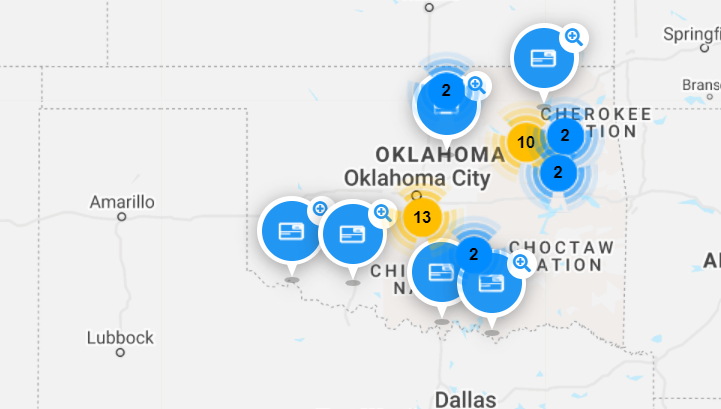ODMHSAS soon to launch the Oklahoma Comprehensive Crisis Response Plan

Pictured above: a hand keeps a row of upright jenga blocks from falling
Over the past two years, mental health concerns have increased substantially among Oklahomans. According to a survey by the Kaiser Foundation, diagnoses of depression and anxiety have increased more than three-fold in the state compared to before the pandemic and Oklahoma Watch reported that in 2021 Oklahoma saw a near 10% uptick in completed suicides since 2019. The Oklahoma State Department of Mental Health and Substance Abuse Services is hoping to address the growing need of mental health care with the launch of a crisis response plan.
In July of this year, the Federal government will launch the national 988 phone number, an emergency line dedicated to serve those experiencing mental health crises. According to ODMHSAS, the Oklahoma Comprehensive Crisis Response plan will soon connect 988 callers to mental health professionals who will provide referrals to mental health assessment and treatment, as well as dispatch mobile crisis response when necessary. The plan also calls for an eventual 50% increase in crisis centers in Oklahoma.
According to a video posted on the ODMHSAS website with Commissioner Carrie Slatton-Hodges, the crisis centers and mental health urgent cares are 24-hour facilities that provide mental health assessment, substance abuse evaluation, case management support, and physicians on staff. In the interview, Commissioner Slatton-Hodges reported that 90% of those experiencing a mental health crisis who were treated by a crisis center were able to avoid hospitalization. The Commissioner also reported that a goal of the Comprehensive Crisis Response Plan will also be to increase the number of crisis hospital beds available across the state to serve those experiencing immediate crisis.
The ODMHSAS website hosts a directory of current 24-hour physical crisis centers, telehealth assessment resources, and crisis phone numbers. According to the directory, many of the physical crisis centers provide same-day assessments, wrap-around care, and stabilization services to support adults and children across the state. ODMHSAS states that mental health crisis and urgent care centers accept walk-in clients and those dropped off by emergency services, with no referral necessary. However, currently most crisis services are concentrated around the Oklahoma City, Tulsa, and Lawton metros, with few resources available in the rural areas of Western and Southeastern Oklahoma.

Above is a map of what is listed in a search of "crisis intervention services" on the ODMHSAS database as of the publication of this article.
The OCI staff called the Oklahoma Department of Mental Health and Substance Abuse Services on January 18th to ask for more information on the Comprehensive Crisis Response plan. Penny, who identified herself as an employee of ODMHSAS, reported that Oklahoma plans to launch the 988 phone number in February of 2022, which is earlier than the federal launch date. When asked about funding for the plan, she reported that currently the Comprehensive Crisis Response plan is being funded by COVID-19 relief money. When asked how the state will fund the plan once the COVID-19 relief funds are used, she reported that the office of the governor would be determining further funding after the COVID-19 relief funds are spent.
As for ODMHSAS’s reported goal of increasing the number of crisis centers in Oklahoma by 50%, Penny reported that the state would be collaborating with community partners, such as NorthCare and Red Rock, to launch more facilities. When asked about the location of the new facilities, she reported that most of the additional crisis centers will be established in urban areas and that she is unaware of any plans to establish centers in rural areas, like Western Oklahoma. When asked about connecting rural Oklahomans to crisis services, she reported that when rural Oklahomans contact 988 in a crisis, community partners such as CREOKS will be dispatched to facilitate the transportation to the nearest mental health urgent care center. This appears to be the practice of Oklahoma’s new Ride Care program, which partners with community mental health care agencies to transport those in crisis to treatment facilities when law enforcement cannot. Penny reported that the current Comprehensive Crisis Response plan is still in its infancy stages and more information on funding, urgent care establishment, and community partners will be available at a later date.
Though the Comprehensive Crisis Response plan aims to increase the number of crisis centers in the state by 50% in 2022, as of this article there does not appear to be information on specifically where in urban Oklahoma the crisis centers will be established or if the state’s shortage among many mental health professions will be addressed. As of 2021 more than a third of Oklahomans lived in an area that the United States Department of Health & Human Services designates as a mental health shortage area, meaning statistically there are not enough mental health care providers to meet the need of the population. Along with more crisis facilities, Oklahoma may be in need of more mental health professionals to best serve the community.
